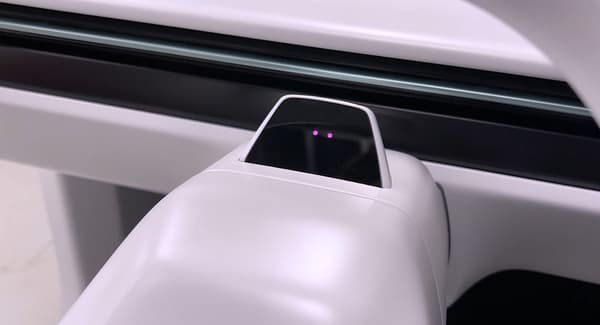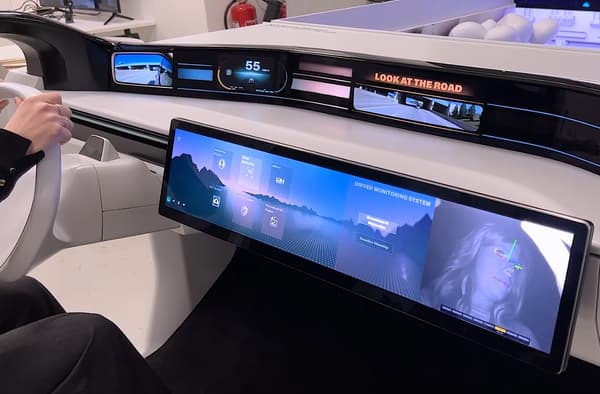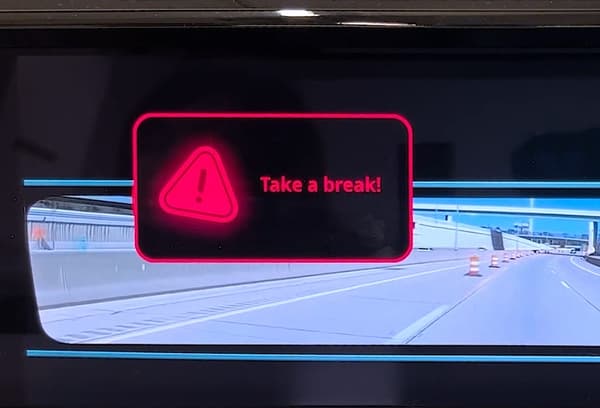A slightly longer look at the screen in the center of the dashboard, and the car displays a small “Watch the Road” pictogram on the dashboard, with lights to draw the driver’s attention back forward. This experience lived this week in a testing laboratory of the equipment manufacturer Forvia will soon be repeated behind the wheel.
As of July 7, 2024, all new car models approved by manufacturers in Europe must have a system for direct detection of the driver’s state of distraction and fatigue, according to a European regulation called “GSR2” (“General Regulation Security 2”).
“This will be mandatory in Europe”
According to Delegated Regulation (EU) 2023/2590, established by the Commission on July 13, 2023 and which completes Regulation (EU) 2019/2144 of the European Parliament and of the Council, this system must notify the driver when the driver removes the look. off-road more than 3.5 seconds at 50 km/h and more and more than 6 seconds of inattention between 20 and 50 km/h. This time of a few seconds corresponds to the maximum distraction threshold set by the regulations. Detection must be possible both day and night, and even if the driver is wearing a cap, sunglasses or even false eyelashes.
This evolution of European regulations therefore takes the drowsiness detection systems (also called “DMS” for “Driver Monitoring System”), one step further, already present in certain vehicles since July 2022.
“This type of system already existed, but it was not very widespread. What already existed in the first version of this regulation were detection systems based on different types of sensors on the steering wheel or in other parts of the vehicle,” explains Ayla Vanden Driessche, Business Development Manager for Driver Assistance Systems at Forvia.
“They were able to determine or estimate, based on the movements of the steering wheel, how to maintain the direction of the vehicle, whether the driver seemed perhaps distracted or inattentive, or even had the beginnings of drowsiness. With this regulatory development, this will be mandatory in Europe and will be much more extended”, continues the specialist. And above all more precise.
An infrared camera that studies many points of the face
Indeed, if the text shows a certain neutrality about the technology to be used, the most effective seems to be the infrared camera.

“It will be able to detect different points on the face: the position of the head, the orientation, but above all at eye level the rhythm of closing the eyelids or blinking,” continues Ayla Vanden Driessche.
As during the tests we were able to carry out (see our report), our face was covered with points identified by the camera located on the steering wheel (it can also be installed on the windshield pillar, ed.). Once these parameters were evaluated, the vehicle instantly issued a signal asking us to open our eyes again and return to our driving.

Repeated signs if we persist with new, increasingly insistent messages. At 50 km/h, in three seconds, a car travels almost 42 meters, enough to understand the consequences of a “prolonged lack of attention”, as the European Union calls it.

Recognize the driver’s emotions.
Like the intelligent speed limiters that will also arrive this summer, this time on all new cars, this regulation is part of the ambition of zero deaths by 2050 on the roads of the European Union. According to French road safety, the first signs of drowsiness increase the risk of suffering an accident by between 3 and 4. By summer 2026, all new cars sold in Europe must have these cameras.
With its generalization, equipment manufacturers and manufacturers are also seeing other applications, these more linked to comfort. Enough to perhaps make the cost of this installation profitable. It is still difficult to estimate the cost of this type of technology for the client.
“These types of systems are capable of providing other information or detecting other elements such as the driver’s emotions to offer music, adjust the interior environment or combine this information with the DMS. For example, depending on where the driver is looking, we can “We can adjust the brightness of the screens to provide greater comfort or highlight important information”, considers Ayla Vanden Driessche. Applications that are still in the prototype phase.
Source: BFM TV

